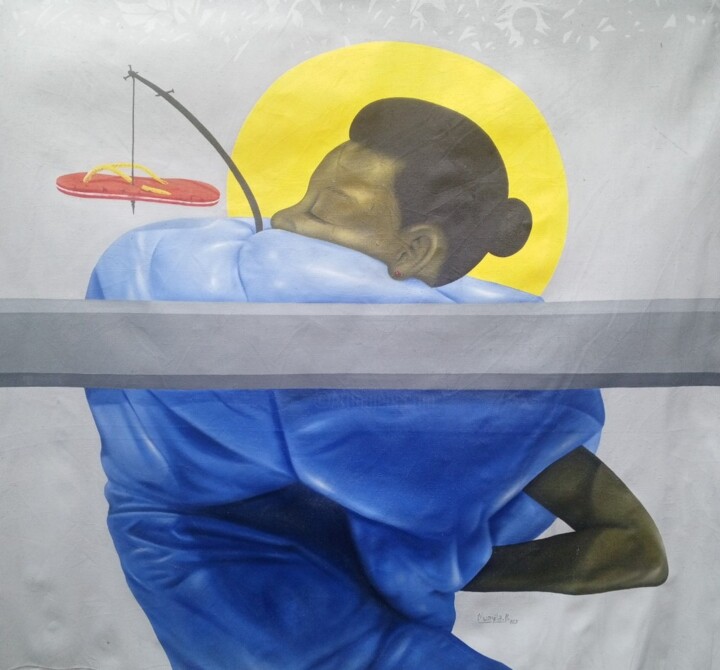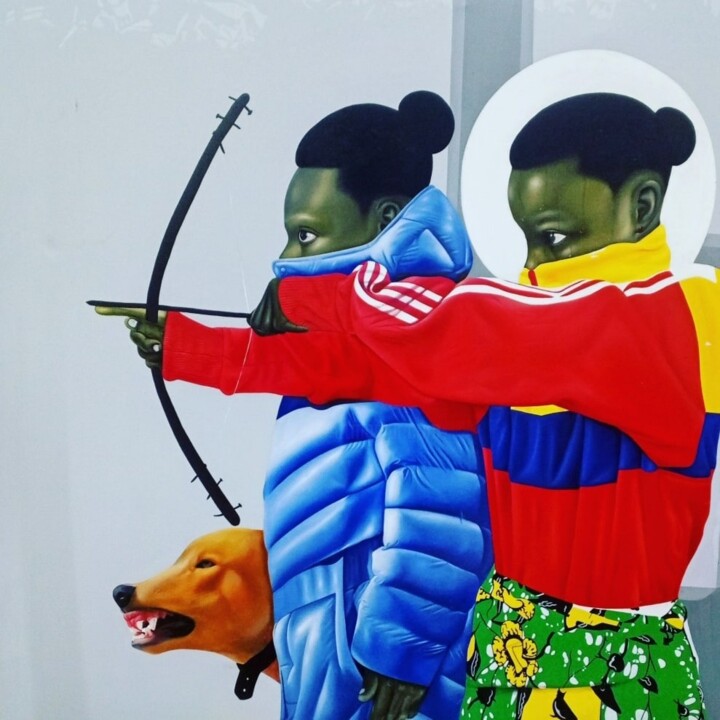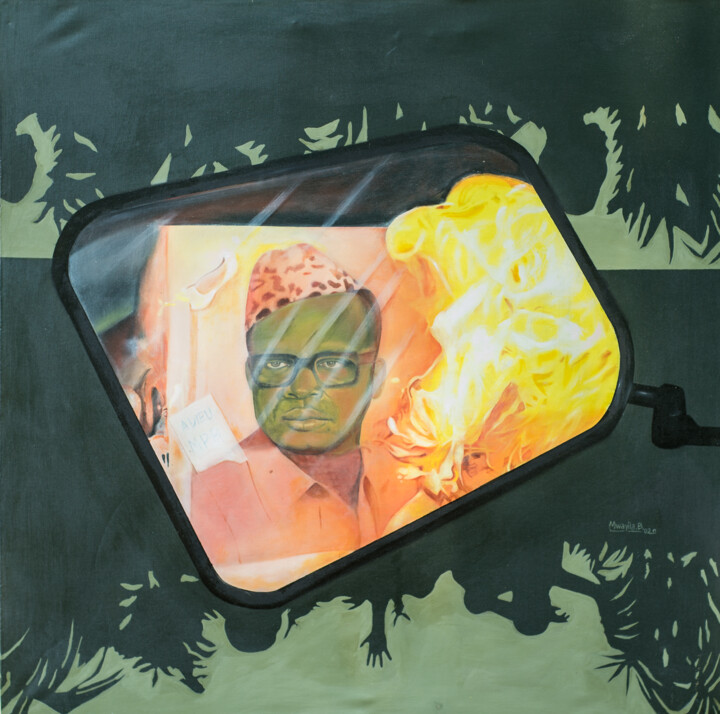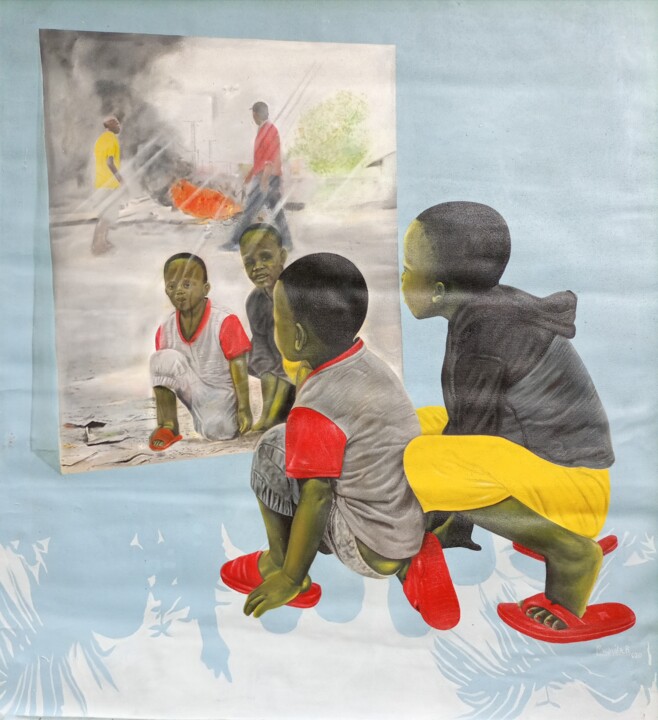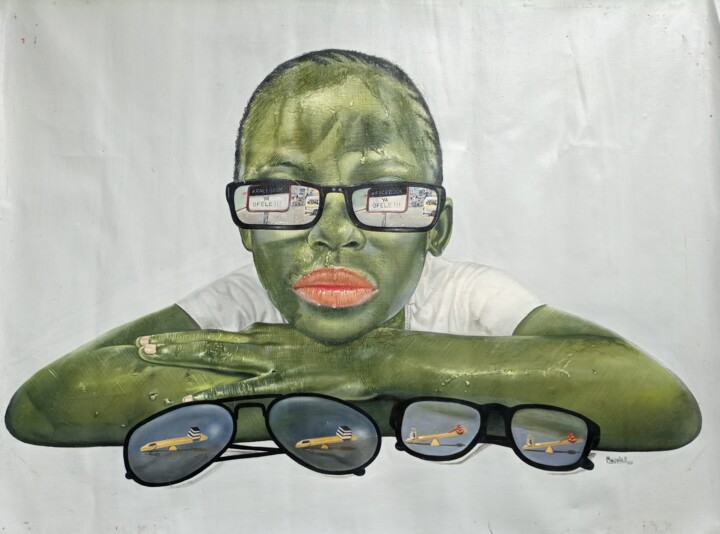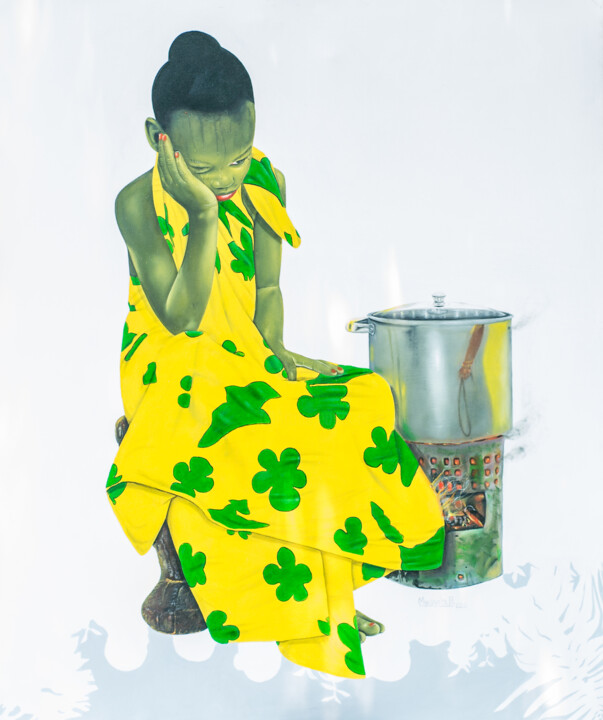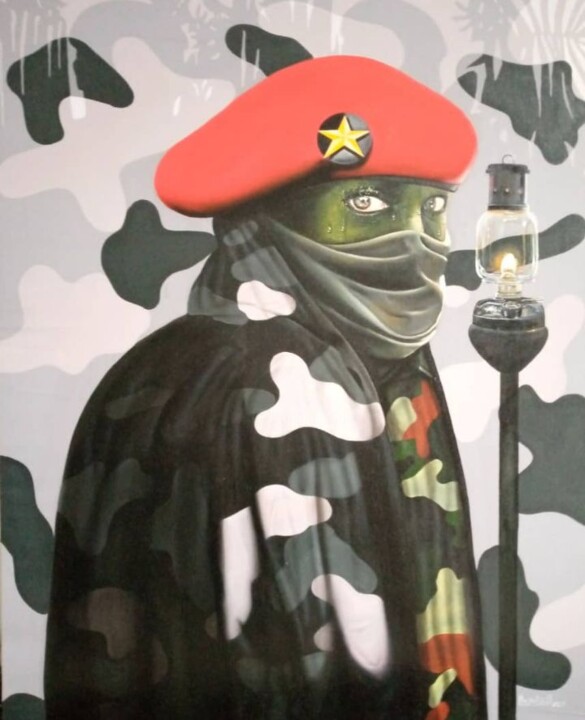What pushed you to approach art and to become an artist? (Events, feelings, experiences ......)
First, it was in primary school that my teacher had directed me to do art, and afterwards I felt obliged to do art, in order to denounce the injustices that we children of Congolese soldiers suffer. .
What techniques and themes have you tried so far in your artistic journey?
So far in my artistic career, I have been working with a realistic stylistic technique, my themes are based on the portrait of the most fragile, the people I consider "the forgotten": these women and children who suffer in indifference.
What are the 3 aspects that distinguish you from other artists and make your work unique?
First there are my characters who are always in green, the backgrounds and military accessories.
Where does your inspiration come from?
As the son of a soldier, I live in a camp reserved for people from this function and their families, in the heart of the city of Kinshasa. I am therefore quite naturally inspired by this particular environment in my artistic work.
What is the intention of your art? What visions, sensations or feelings do you want to evoke in the viewer?
The intent of my art is to create a better future for those living in military barracks. My vision is to make the viewer aware of our living conditions.
What is the process of creating your work? Is it spontaneous or is there a long process of preparation (technique, inspiration from art classics or other)?
In the process of creating my work, I deal with my concerns, my questions about the lives of military families, which I transpose into my work.
What techniques do you prefer? If yes, can you explain it?
Oil and acrylic on canvas. I work my characters and other elements with oil paint and the backgrounds with acrylics.
Are there any innovations in your work? Can you tell us which ones?
Yes, there are innovations. First, my green characters and my way of inserting the camo print backgrounds now.
9. Do you have a preferred format or medium? If yes, why ?
Personally, I work on all formats and supports, I have no preference on these points.
Where do you produce your work? At home, in a shared or private studio? How is your production organized in this space?
Currently, I produce my works at home. I work in a room where I stick my canvases on a wall, saw the space and I roll them up after I'm done, and I put them in a tube to protect them.
Does your work lead you to travel, meet new collectors, take part in exhibitions or presentations? If so, what do you get out of it?
Yes, my work takes me to participate in exhibitions. I learn other things from it and I come to understand how the outside world views us, the children of Congolese soldiers.
How do you imagine the evolution of your work and your image as an artist in the future?
I imagine that the evolution of my work brings a radical change in the lives of Congolese soldiers and their families, and that I am also counted among the great contemporary artists of the 21st century.
What is the theme, style or technique of your latest work of art?
My weapon burns me, realism, oil and acrylic on canvas.
Can you tell us about your most important exhibition experiences?
The TMB 2022 exhibition, where I presented a series of works, which I talked about everything that bothers us children of soldiers.
If you could create one famous work of art history, which one would you choose? and why choose it?
My father's blood. I will choose to create this work, to show the importance of the military, the importance of their sacrifice represented in blood, the way our military parents sacrifice themselves, just to protect a nation, a people.
If you could invite one famous artist (dead or alive) to dinner, who would it be? How would you suggest he/she spends the evening?
The artist I can invite is Tim Okamura. Let him share his experience as an artist with me, and create a work of art with him and exhibit it in a museum.






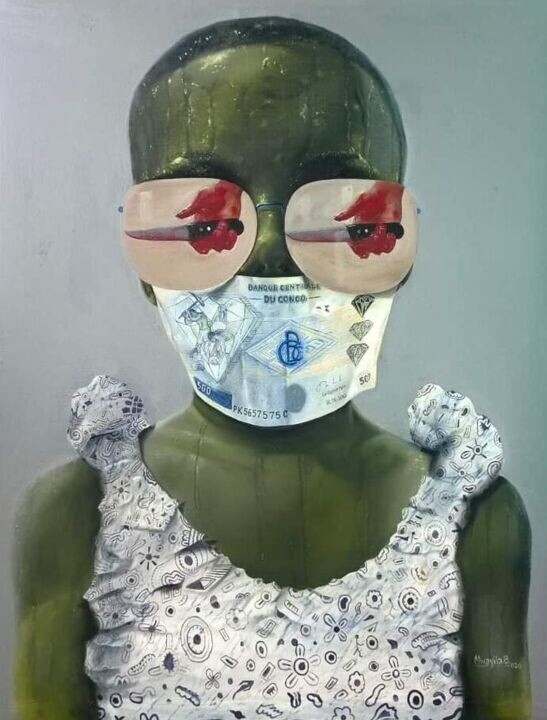
 Olimpia Gaia Martinelli
Olimpia Gaia Martinelli

